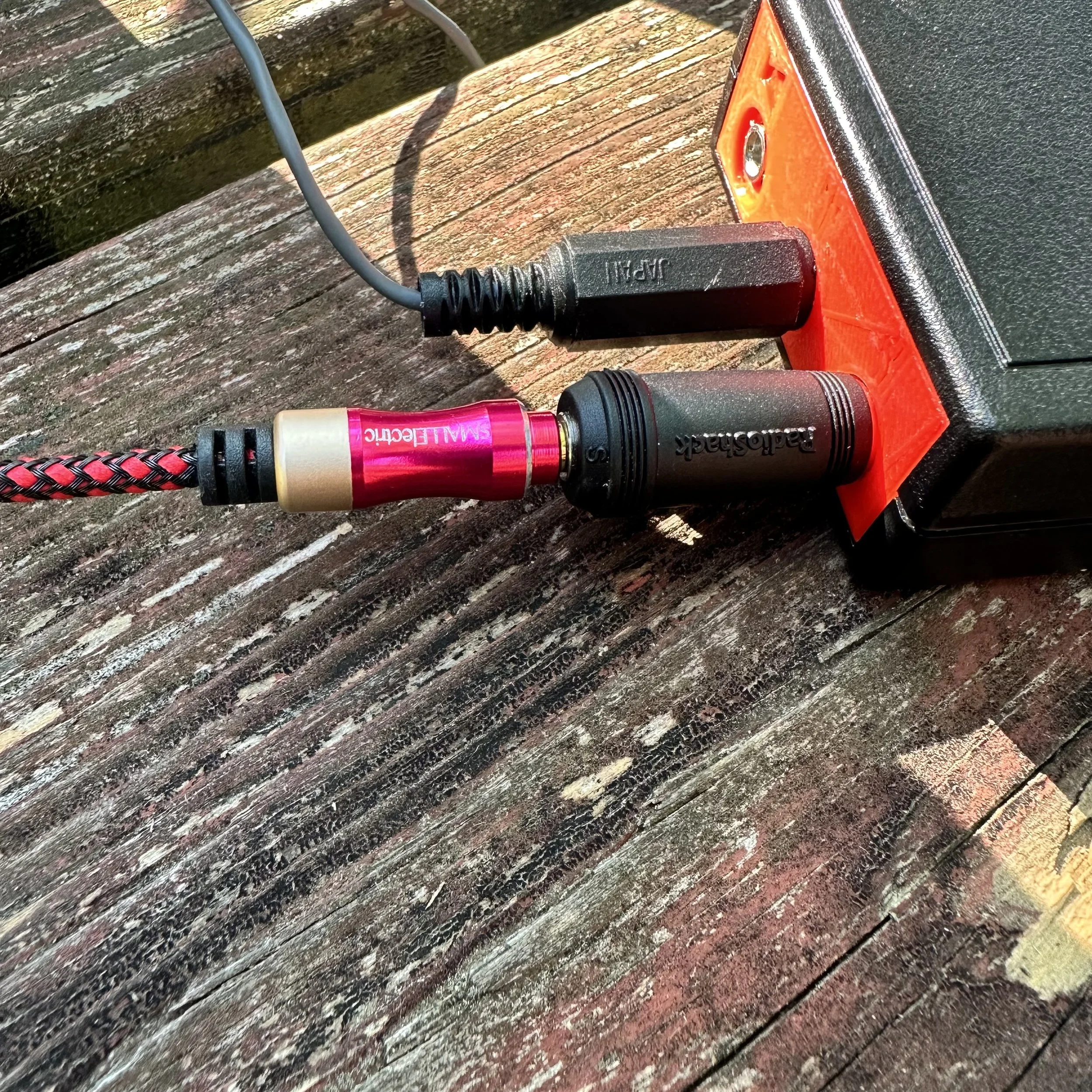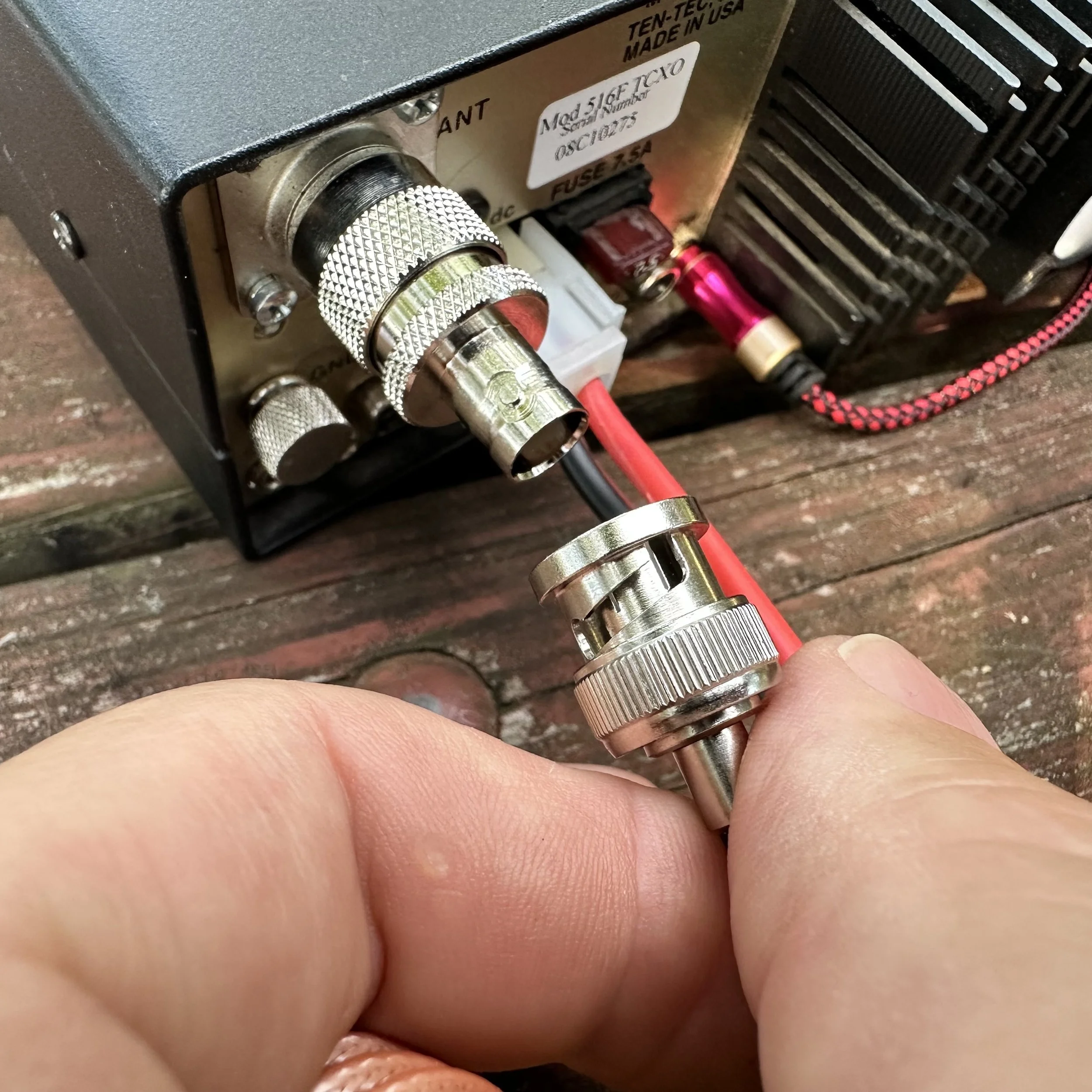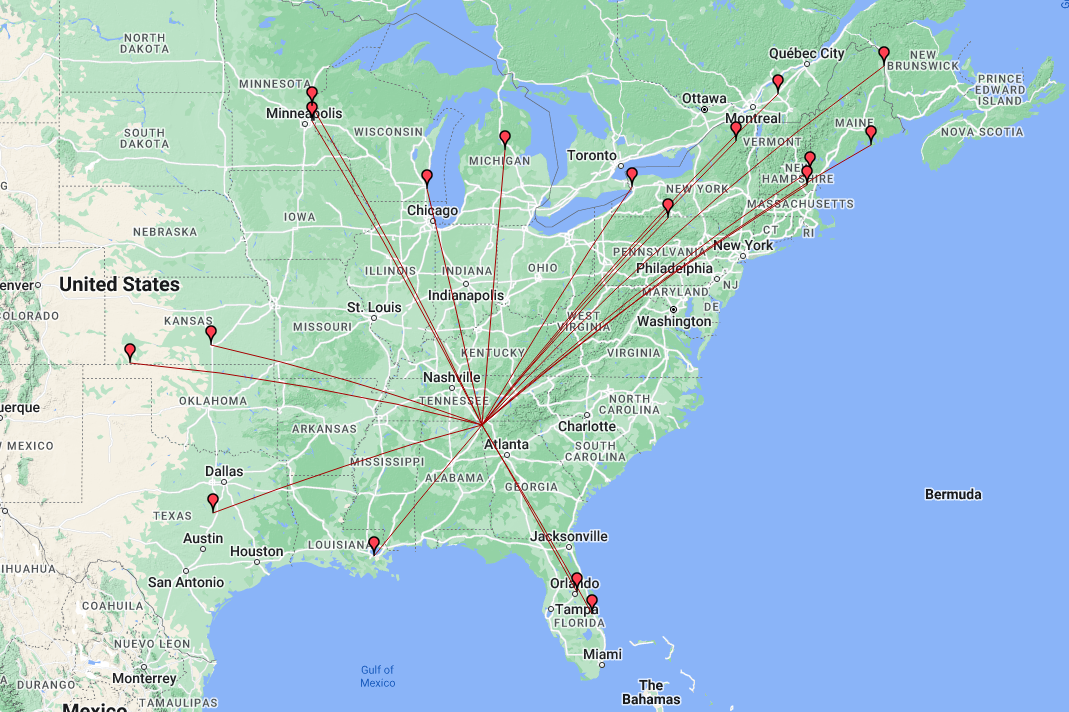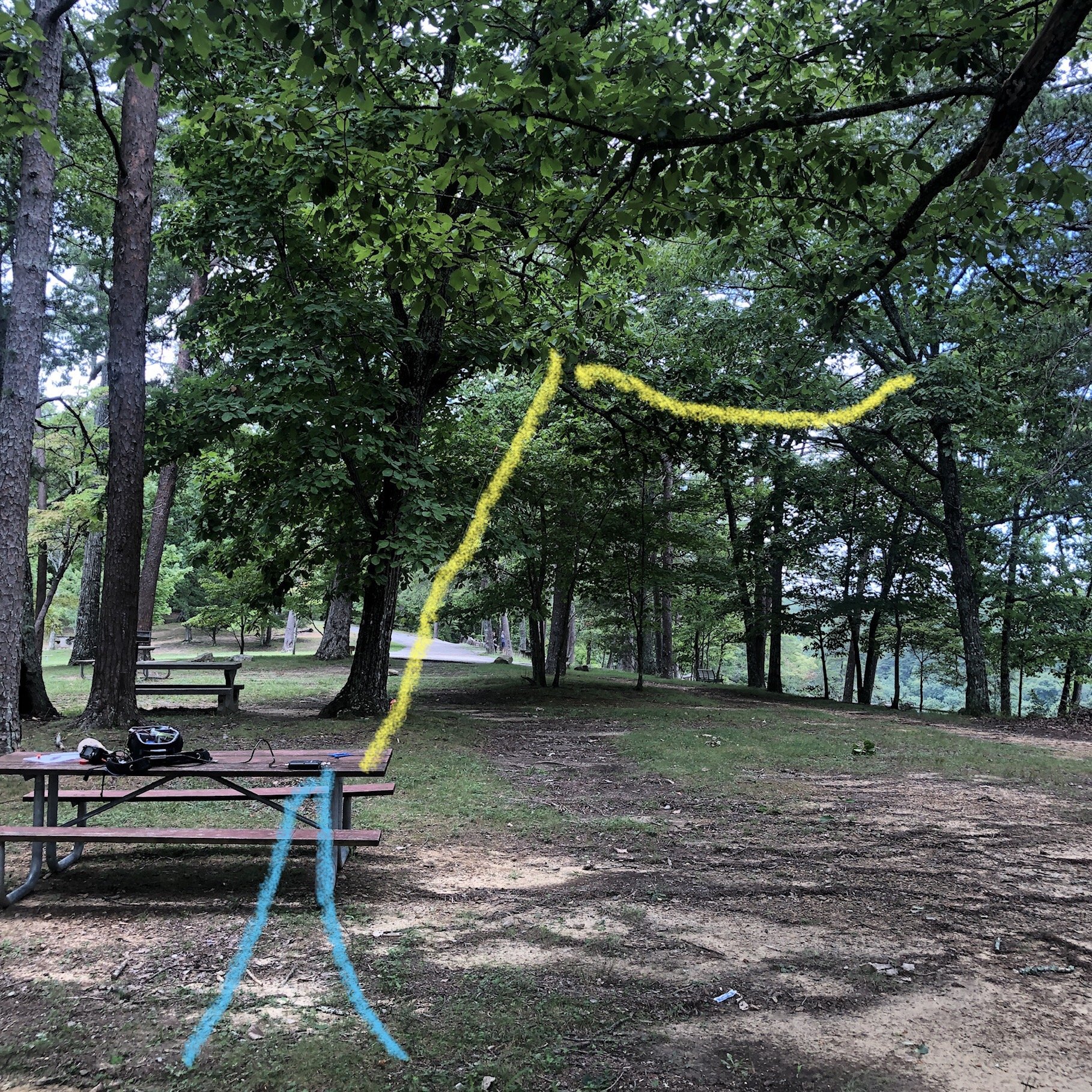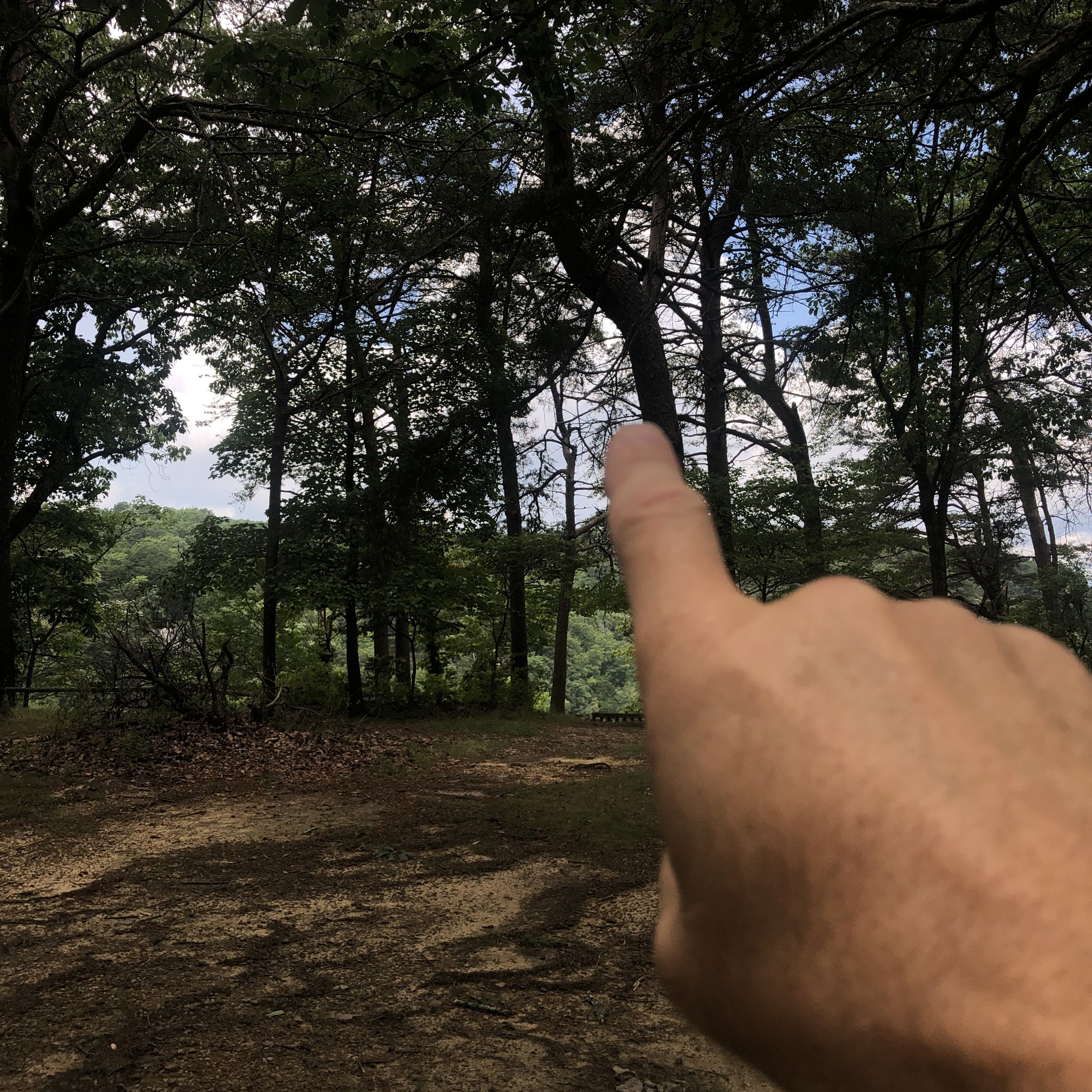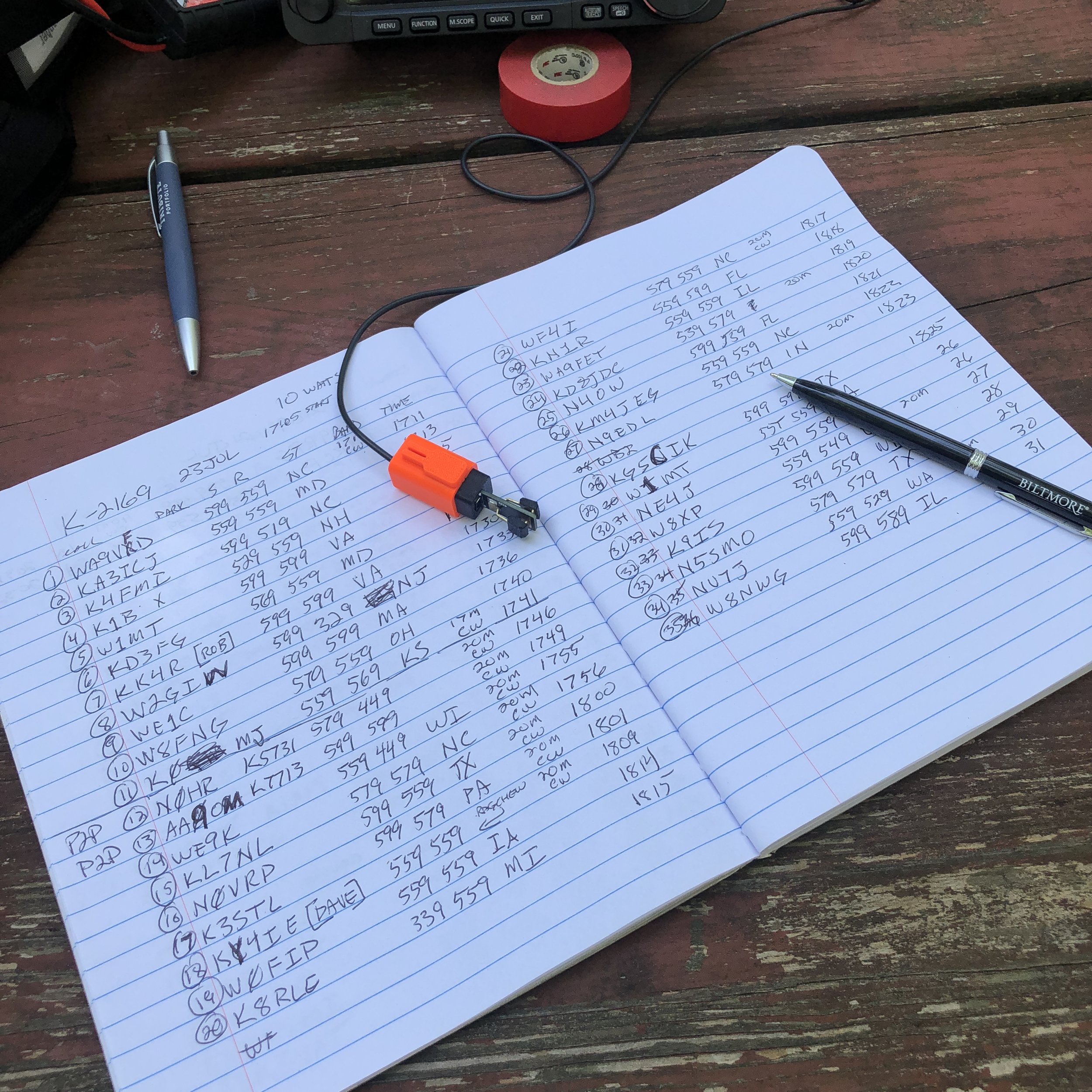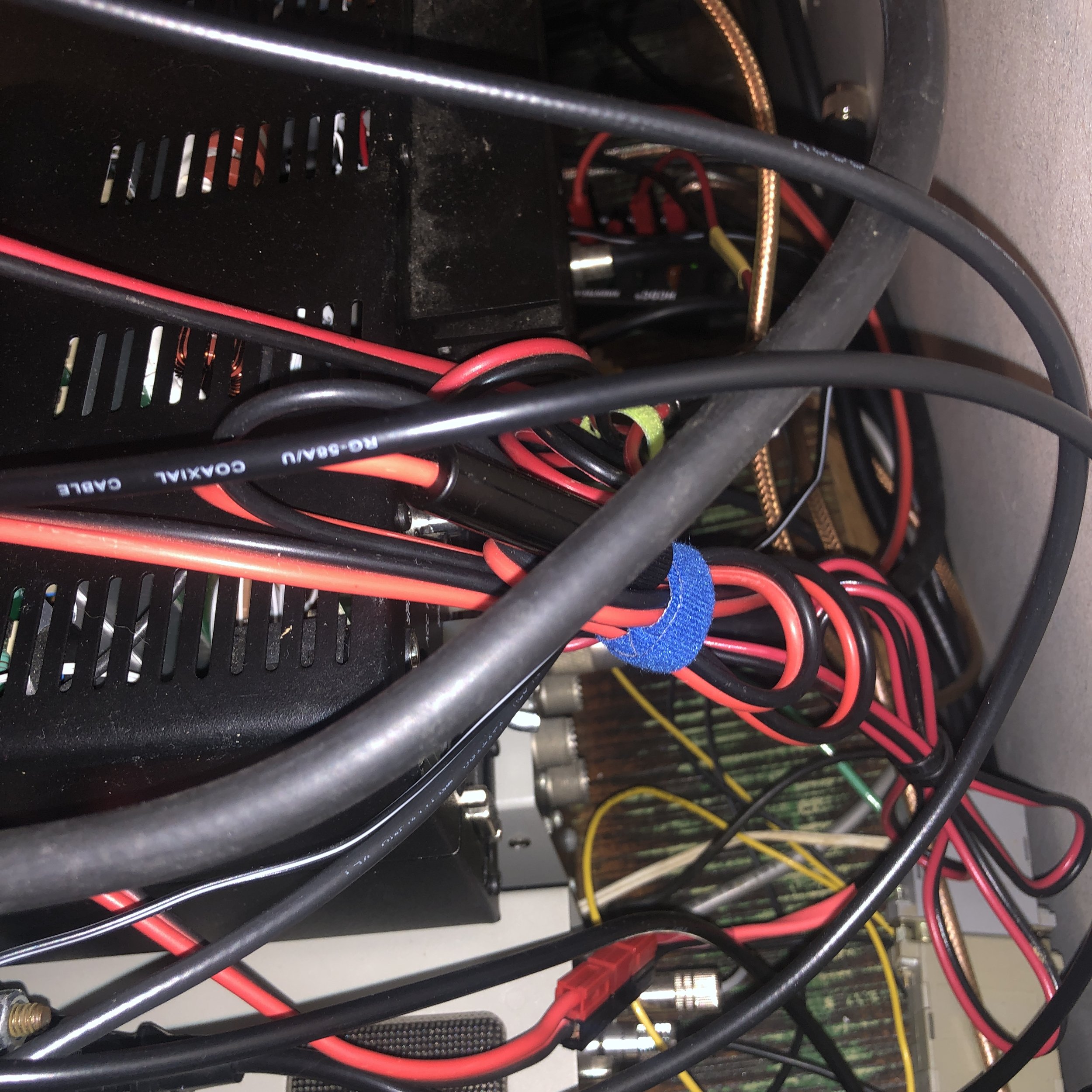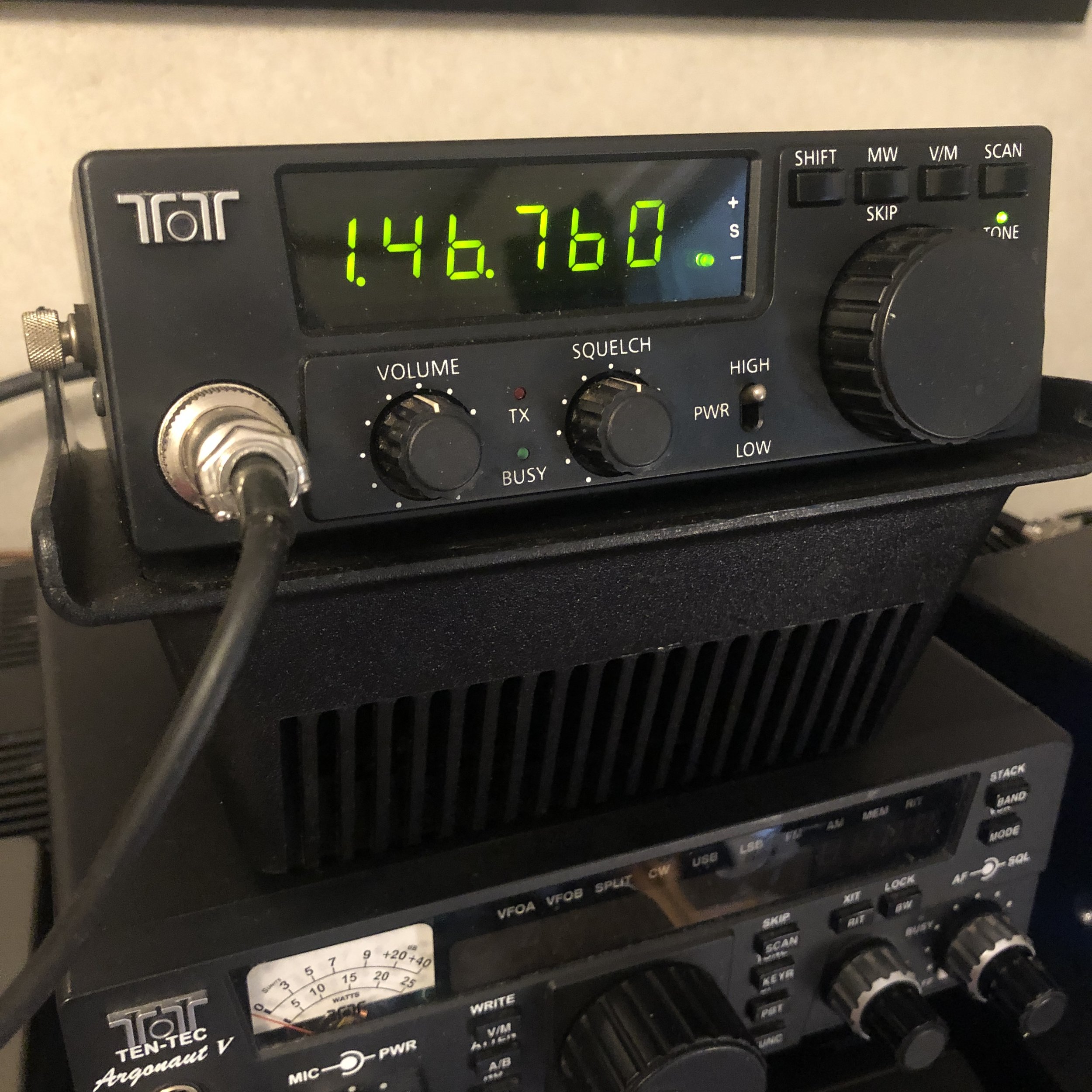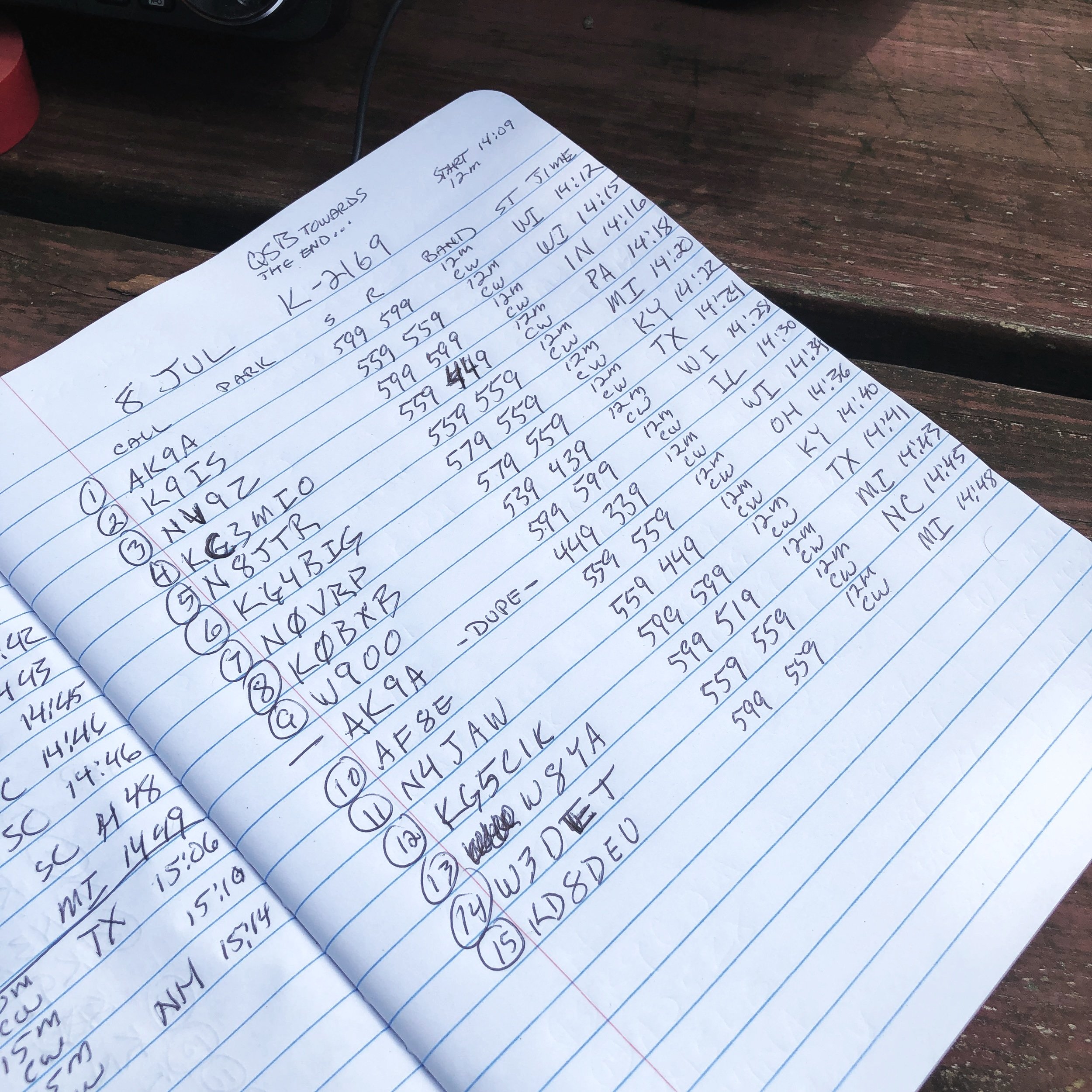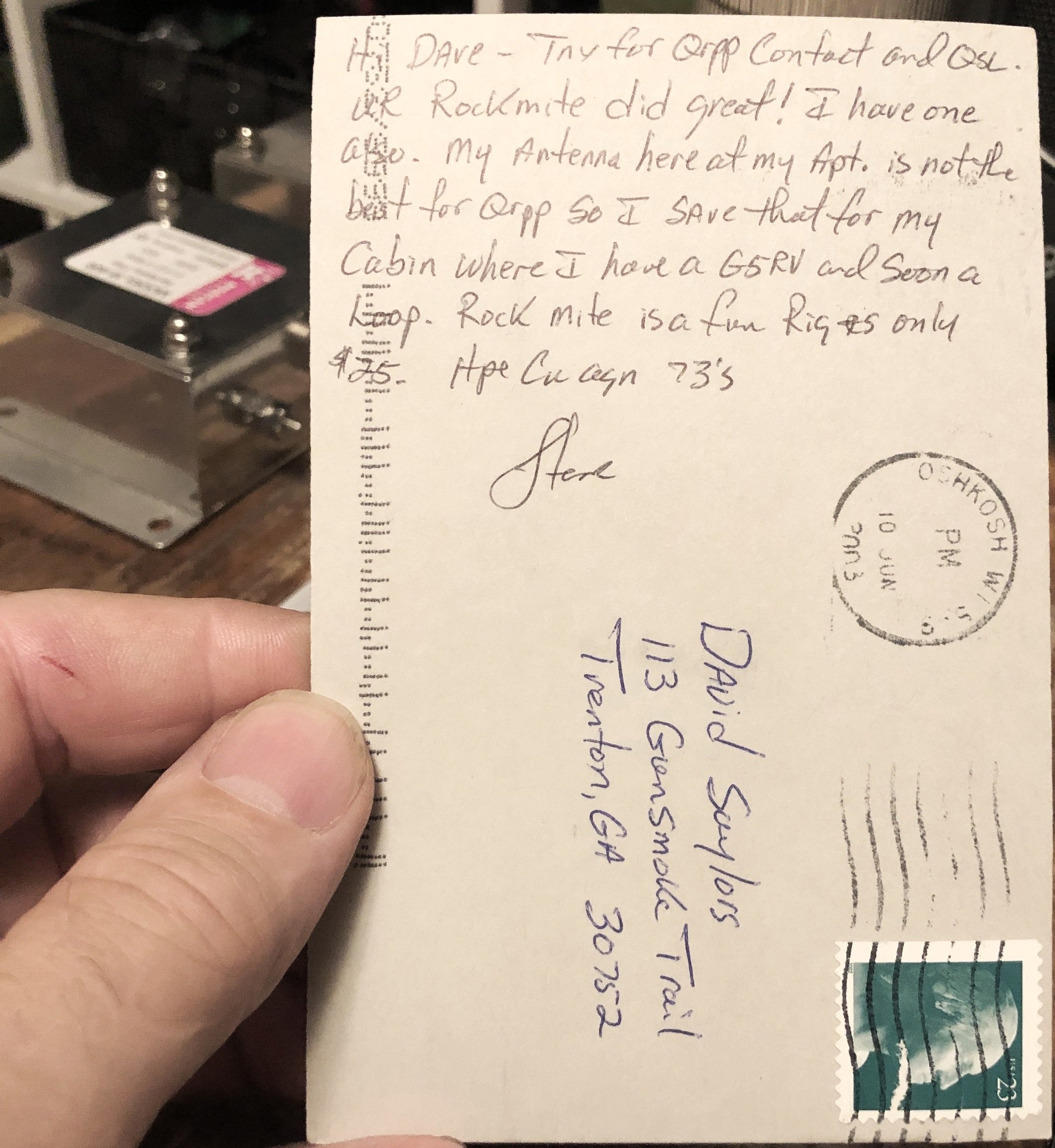The past couple of days have been busy and there was still time for a couple of quick activations along the way.
First stop is the Estelle Trailhead on Crockford Pigeon Mtn WMA (K-3742) over in LaFayette GA while coming home from visiting with my mom. This is actually a new park for me even though it is only 15 miles from home by road… I dont know why, but I have never activated it for some reason. The Estelle parking area is fully within the WMA boundary so it was a simple matter to pull in, get parked out of the road and setup a radio in the shade for a little while. Today saw the Ten Tec Argonaut 5 again as this radio was the one in the truck at the time. It is also one of my favorite HF radios at this point. It only lacks two things to be the perfect radio, an SWR meter and an internal antenna tuner…but I digress.
I said that I setup in the shade, but there really wasn’t much to start with…lol. I did get lucky and a nice cloud moved in after a few minutes and helped keep things cool. I don’t like to let my radios just sit and cook in the sun if I can help it and will go to fairly great lengths to prevent them from getting hot. This is what you see here. The shade was just wide enough to protect most of the radio from direct sun so it didn’t get very hot before the clouds moved in. On top of that the tool bag is shading my battery in this photo too, I didn’t want it to get too hot either…haha.
I started on 15 meters today as I finally have a 15 meter capable radio and antenna too! Well the RBN showed 29dB for me! That is crazy good for someone with 15 watts under their belt into “7” land. But try as I may, there just wasnt that many hunters on 15 meters for some reason. I did get 3 QSOs in the log while on 15 meters so all was not lost. Then I moved down to 17 meters and did quite well there, picking up several more contacts. Then I finished out the activation on 20 meters which is my backup if I need to get my 10 for the activation. 20 never seems to let me down either as I can almost garuntee at least a few contacts there.
So after getting the activation, I wanted to experiment with the antenna system and see how it would work on the drive home. Turns out the 20 meter hamstick without radials has worse SWR than with them, going from 1.15:1 up to 1.7:1. Who would have guessed? LOL. This is not a real problem though as this is still well below what I consider useable SWR. As long as I can stay below 2.5:1 I will operate. That is the upper limit though and I will work on the antenna a good bit to get it down but if nothing helps and I have 2.5:1 SWR, I will try it. The radios can handle anything below 3:1 so I set my personal threshold below that… I know some people wont use their gear if isn’t almost perfectly 1:1, but I have come to realize that it isn’t so important and the signal reports speak for themselves.
On the drive home, I start hearing this REALLY strong signal booming in to the Argonaut 5. The above photo shows what the signal level coming into the radio was 20 over S9, and remember that the Argonaut 5 has a S meter that doesn’t like to give out good signal reports. So I start working on head copy on the drive and finally get that it is W1AW/0 in Colorado and he (or she) is working as a POTA park! So I do what any sane POTA hunter would do, I pull over at the New Salem Firehall and work them mobile! WK4DS/M got into their log!!! WooHoo!!! So at the bottom of the logbook page you will see where I logged the hunter contacts on this trip since I was not at a park when I made these contacts.
New Salem Firehall parking lot was empty and worked great for getting my hunter contact on the drive home.
As a side note, I finally made the hitch pin (shown below) for my antenna mount so I can use it for the rover program without having to pull it off the truck and stow it between parks. I am working on reducing the setup and breakdown time at each park as I am going to attempt a 10 park rove and this will take planning to make it happen. Things like this can add up on the rove to make it take too long since the drive time from one park to the next will be the biggest time eater of the day. So if I can find simple little things that I can do on each stop to save time, I can make the most of the activation.
I made the main pin that holds the mount, but I simply bought the little pin to lock it in place. Sometimes it is smarter to buy a part rather than spend the time to make it. The main pin was easy enough to make from scrap shafting material. but to make the keeper pin would have taken more than the 3$ it cost in time so I opted to simply buy it instead. To be honest, it would have probably been smarter to buy the main pin too, but I had a scrap piece of round and time available on the lathe so I just carved one out right quick rather than drive to the store to buy one. Another plus is that I could make it like I wanted which included adding the handle to the main side so it is easier to pull when breaking down the system. On top of the pin making, I also opted to add an extra set of holes to the antenna mount so that the pin can be left in for simple POTA activation days where I dont have to pull the pin to simply setup for a single park. This allows me to just stick the mount in the hitch and use it like I have been and take it down when done so I can stow it inside the truck bed when not in use.
The next park I went to a couple of days later is the Chickamauga National Military Park. K-0716. This park lies in two states, so today I opted to activate the Tennessee side of the park. This location is easy to access as it is literally on the side of the road. This is why I like this location and hate it at the same time. The location is called Eagles Nest and is part of the military park completely within the park boundary.
K-0716 presents me with a quandary. This “shack” position makes for a comfortable operating position but the road noise is really bad due to the proximity to the road… I have used headphones here before and that seems like the correct thing to do if I operate here much more. I am going to go ahead and get my repeat offender for activating this park. I am already half way to this award anyway so why not? Ha Ha… Another thing that surprises me is that there are some fairly large trucks to travel up this narrow and winding road to the top of the mountain. Like large d4livery trucks kind of large, I guess it is normal, but it just kind of caught me off guard to see such large trucks going by while I was there.
The radial situation is unique here too, since it is on the shoulder of the road, I have to put both radials on the same side of the truck. Whenever I do this, I always get out the nanoVNA to see what this has done to the SWR plot. As usual, it did affect it but not by much. I was surprised to see that on 15 meters it needed both radials to get a decent SWR before I was happy. So I get it setup, spot myself, start a log in HAMRS and start calling CQ. I finally net a couple of contacts on 15 meters, but there are not many hunters even though the band was open. It did have some fading, but it was fairly strong anyway and could easily support use, but people were not there. So I moved down to 17 meters. Once on 17 meters the RBN (Reverse Beacon Network) picked me up and showed the strongest signal report I have ever seen for one of my activations. 42dB is insane! I have never seen that and this was with 15 watts no less. So people MUST be on this band, right? Well no, it seems that all the people on HF were down on 20 meters having a grand old time without the few of us up on 17 meters. I added 4 more QSOs to the log with one being KJ7DT who followed me down the bands working me on all three on this day. To me this is awesome as it shows the propagation for all three bands was really good as he is in Idaho which is almost 1800 miles from me.
So I finally decide to join in on the fun on 20 meters and QSY down with what seemed like the rest of planet earth and secured the activation in short order. Getting Paul - KJ7DT a third time on this day and Keith WI0S twice! Both of these calls have appeared in my log on numerous occasions. These are some very prolific hunters and I just want to thank them for being there to hunt like they do. They are what make activating parks fun. With 13 calls in the log I officially had the activation so I packed up as it was getting close to lunch and the road noise made it very hard to hear as well and headed into Chattanooga to go have lunch with the girls.
The clip board has made a huge difference in operating ease for me. I can now not worry about the wind turning the pages and it gives me a hard surface to work from no matter where I am. This alone helps a ton. As seen here, I am able to lay the keyer and the key on it as well as log. If you still paper log this is a very handy addition to the POTA kit in my book. Yes, I still paper log. I have had too many computers where they crash unexpectant and you have to reboot the machine and wait for it to get back up and running to trust it with my only log of an activation. The paper notebook gives me a durable backup to my phone logbook that I run at the same time.
Side note about how I log… I will run HAMRS in parallel to my paper logs and if the activation is going kinda slow, I can log both at once and keep the electronic log caught up in real time. This is a recent thing brought on by me wanting to not have to set aside time at home just to transcribe the log so I can submit it online. I found that a lot of my activations are slow enough to permit time to log the QSOs while I work the activation and not have to do it at home. So if things speed up and I cant log both the paper and electronic, then I always default to paper and the battery never goes dead in paper logs nor does the app crash… Then when things slow down, I will let the keyer send CQs and I will catch up the electronic log while I am calling so I don’t waste that time just sitting there waiting on an answer. This works really well and I can normally email the log from the park before I leave so when I get home I can simply upload them to the POTA site since it wont let me upload from my phone yet…
Here is something else that a lot of people that don’t do field ops have no idea about. A carrier with a bunch of backup equipment is a must. Everything in this bag has been used on an activation in the last few months in one way or the other. Notice there is power cords and spare coax and three pens are visible on the side, this is something that you quickly learn, things break, pens dry out, you run out of paper, all of this is things you have to prepare for before going to the park and the only way you learn this is from doing it. I can preach to the ends of time but until you have to end your activation because your coax connector came off or the center conductor broke on the coax or your antenna mount breaks, you wont prepare for it as a contingency. That is just how it is…Another really handy tool to have is a Leatherman multitool of some kind, brand isn’t important, what matters is that you have one, I don’t know how many times I have used mine to save the activation some how. Totally worth the price of admission in my book.
QSO maps are awesome, I have KJ7DT in the log on all three bands today so his one pin is actually three. Just like I have WI0S in the log twice so his pin represents two contacts. This is neat to see though as you get a visual idea of what the bands were like on this day. If I studied space weather more then I would be able to corelate the data so that it would be more meaningful, but like this it really doesn’t tell much other than skip distance for the bands I used. That is about it but it is still fun to look at them nonetheless.
So this is what it looks like to activate two parks on two different days and how the setups vary for each one based on the conditions for each location. Next time I will carry headphones for the one by the road so I can hear better. Till then, get your radio out and make some contacts with it!!!!




























